
Fujimoto: The future lies in the connection between nature and architecture
Prague - The future of architecture lies in the connection of buildings with nature and tradition with modernity. This was stated at today's conference of the Association for Architecture and Development by the prominent Japanese architect Sou Fujimoto, who focuses on transparency and the integration of interiors with exteriors in his work. Other Czech and international architects also agreed on the importance of greenery in cities, inspiration from nature, and care for public space.
Fujimoto attempts to achieve harmony in his designs by combining the diversity of nature and the city. Both the human-created world and the natural world encompass complexity and simplicity, which can be reconciled. "And that is the big question: how can we seriously think about the relationship between architecture and nature in the future?" stated the architect. He added that it is also essential to merge tradition and history with innovativeness.
He illustrated his attempts to blend nature and architecture through three of his own projects. The first is one of the pavilions of the Serpentine Gallery in London's Hyde Park. In it, the architect tried to achieve a connection between the interior and the surrounding park using a grid structure that opens the pavilion to views from the outside.
The residential building currently under construction in the French city of Montpellier is designed to resemble a white tree with its numerous terraces. The balconies also create opportunities for a better neighborhood community and open the apartments to the outside world. "The entire building will be covered with life," explained Fujimoto. The last mentioned project is a proposed residential complex in Paris, which aims to offer the public and residents an open wooded roof and a park at ground level. "In the 21st century, it is time to bring nature back," the architect concluded, whose studio is currently participating in an architectural competition in Prague for a complex of buildings on the site of the former Telecom in Žižkov.
The importance of nature and public space in the context of modern cities was also emphasized by other speakers. The dean of the Faculty of Architecture at ČVUT, Ladislav Lábus, stated that in today’s conditions, it is just as important to talk about a "culture of non-stop development" as about a "culture of development." It is necessary to address how to cultivate the spaces we move through in the city every day, he noted. He added that especially for the younger generation, public space is more essential than for the older generation, accustomed to traveling outside the cities on weekends.
Architect Eva Jiřičná, who works in the UK, pointed out that there is a much stricter approach to cars in London. She would advise the same approach in Prague. "It must start to become truly drastic because cities are not able to accommodate transport," she stated. According to her, building regulations in Prague require an absurdly high number of parking spaces for every residential building, which should be reconsidered.
Scottish architect Ian Ritchie also highlighted inspiration from nature in his contribution, stating that beauty is non-linear, so buildings that incorporate non-linear elements have a greater chance of being positively received by the public. British structural engineer Ed Clark emphasized the need to consider climate change when constructing buildings in the city.
Fujimoto attempts to achieve harmony in his designs by combining the diversity of nature and the city. Both the human-created world and the natural world encompass complexity and simplicity, which can be reconciled. "And that is the big question: how can we seriously think about the relationship between architecture and nature in the future?" stated the architect. He added that it is also essential to merge tradition and history with innovativeness.
He illustrated his attempts to blend nature and architecture through three of his own projects. The first is one of the pavilions of the Serpentine Gallery in London's Hyde Park. In it, the architect tried to achieve a connection between the interior and the surrounding park using a grid structure that opens the pavilion to views from the outside.
The residential building currently under construction in the French city of Montpellier is designed to resemble a white tree with its numerous terraces. The balconies also create opportunities for a better neighborhood community and open the apartments to the outside world. "The entire building will be covered with life," explained Fujimoto. The last mentioned project is a proposed residential complex in Paris, which aims to offer the public and residents an open wooded roof and a park at ground level. "In the 21st century, it is time to bring nature back," the architect concluded, whose studio is currently participating in an architectural competition in Prague for a complex of buildings on the site of the former Telecom in Žižkov.
The importance of nature and public space in the context of modern cities was also emphasized by other speakers. The dean of the Faculty of Architecture at ČVUT, Ladislav Lábus, stated that in today’s conditions, it is just as important to talk about a "culture of non-stop development" as about a "culture of development." It is necessary to address how to cultivate the spaces we move through in the city every day, he noted. He added that especially for the younger generation, public space is more essential than for the older generation, accustomed to traveling outside the cities on weekends.
Architect Eva Jiřičná, who works in the UK, pointed out that there is a much stricter approach to cars in London. She would advise the same approach in Prague. "It must start to become truly drastic because cities are not able to accommodate transport," she stated. According to her, building regulations in Prague require an absurdly high number of parking spaces for every residential building, which should be reconsidered.
Scottish architect Ian Ritchie also highlighted inspiration from nature in his contribution, stating that beauty is non-linear, so buildings that incorporate non-linear elements have a greater chance of being positively received by the public. British structural engineer Ed Clark emphasized the need to consider climate change when constructing buildings in the city.
The English translation is powered by AI tool. Switch to Czech to view the original text source.
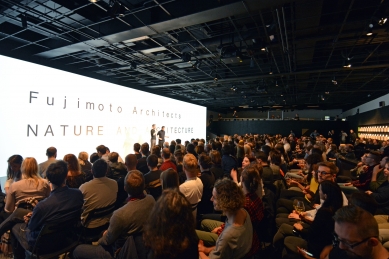
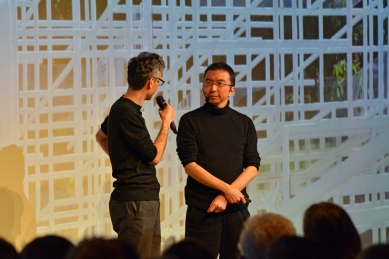
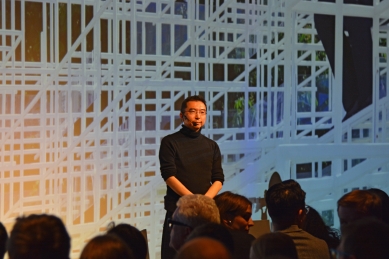
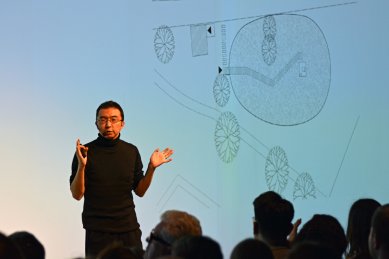
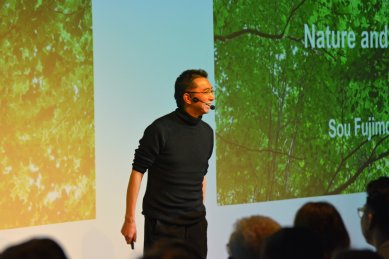
0 comments
add comment
Related articles
0
14.07.2023 | Sou Fujimoto: Primitive Future - Everything is circulating
0
26.03.2019 | Architect of the world's best upcoming project, Sou Fujimoto, is competing for the opportunity to build in Prague
0
26.03.2019 | Urban Talks: Sou Fujimoto
0
27.06.2018 | Interview with Sou Fujimoto at reSITE 2018
1
15.02.2013 | The author of the 2013 Serpentine Gallery summer pavilion will be Sou Fujimoto





